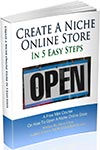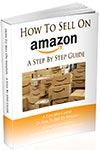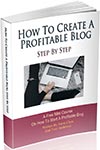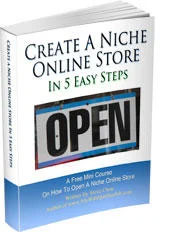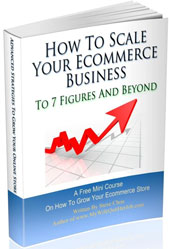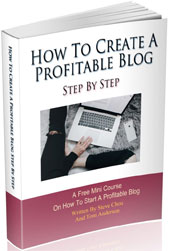What if I told you there’s a place where following the rules is more of a suggestion, and entire teams of eCommerce sellers work around the clock to outsmart the world’s largest online marketplace?
Welcome to China South City—Shenzhen’s hidden technology underworld and the global capital of Amazon black hat tactics.
Are you interested in creating a strong, defensible brand for your products? If so, I put together a comprehensive package of resources that will help you launch your own online store from complete scratch. Be sure to grab it before you leave!
What is China South City?
Located in Shenzhen, China South City is a massive logistics and trade hub covering over 1.1 million square meters—equivalent to 205 football fields. This sprawling complex is not just a center for wholesale trade, manufacturing, and distribution; it’s also a strategic base for some of China’s most influential Amazon sellers.
While Shenzhen is renowned for producing cutting-edge smartphones and computers, an even more fascinating ecosystem thrives within China South City. This network of Chinese sellers, marketers, and supply chain experts has turned defeating Amazon’s algorithms into a multi-million-dollar industry. These aren’t just small-time operators; we’re talking about sophisticated professionals running operations more complex than some legitimate tech companies.
China South City comprises several interconnected buildings, each bustling with showrooms, offices, and warehouses. The infrastructure is designed to optimize logistics, allowing businesses to manage sourcing, production, and distribution from one central location. The environment fosters rapid business development, enabling companies to launch new products quickly and efficiently.
The Epicenter of Amazon Manipulation
Nearly every major Chinese Amazon seller has, at some point, had an office in China South City. Inside, you’ll find:
- Teams capable of generating thousands of authentic-looking reviews within hours: These teams employ sophisticated techniques, including review farms and incentivized feedback loops, to create a facade of credibility for new products.
- Algorithms designed to manipulate product rankings with surgical precision: Custom-built software tools analyze Amazon’s ranking algorithms, allowing sellers to tweak listings, pricing, and advertising strategies for maximum visibility.
- An economic infrastructure built to exploit every loophole in Amazon’s system: From fake order schemes to seller account hijacking, the tactics used here are both diverse and highly effective.
Companies like Aukey, which once generated over $750 million in revenue, operated out of this very building until Amazon cracked down on them in 2021 for review manipulation. These companies had entire departments dedicated to exploiting Amazon’s vulnerabilities, often operating in gray areas of legality.
Why Is China South City Important?
China South City isn’t just a building; it’s the heartbeat of Chinese eCommerce strategies. The Chinese government actively supports hubs like this with grants and subsidies, fostering an environment where sellers collaborate daily, sharing insights on everything from shipping logistics to product ranking strategies.
This government backing is a crucial factor. Subsidies reduce operational costs, allowing sellers to invest more in marketing and technological development. Additionally, regular government-sponsored workshops and seminars keep sellers updated on the latest trends and compliance requirements in international markets.
While American sellers often operate in isolation, Chinese sellers benefit from this communal approach, making it an uneven playing field. Imagine an eCommerce conference happening every day—that’s what China South City offers its tenants. This constant exchange of ideas accelerates innovation, helping sellers stay ahead of global competitors.
The Amazon Crackdown: A Turning Point
In May 2021, a website called Safety Detectives exposed a 7 GB database of messages between Amazon sellers and fake reviewers. The scale was staggering, with over 200,000 sellers implicated. This led to Amazon suspending a massive number of accounts, including giants like Aukey, MPow, and Ravpower, whose revenues plummeted by over 80%.
The fallout turned China South City into a near ghost town. Entire floors that were once filled with bustling offices became eerily quiet. However, many of these once-bustling offices are now being converted into live-streaming studios, marking a new era in Chinese eCommerce.
The crackdown served as a wake-up call for many sellers, prompting them to diversify their strategies. Some shifted focus to building legitimate brands, while others explored alternative marketplaces to reduce dependency on Amazon.
The Rise of Live Selling in China
With trust in traditional platforms dwindling, Chinese sellers are shifting towards live-stream commerce. Influencers on platforms like Douyin (China’s version of TikTok) are driving massive sales. For example, influencer Jiang Ziang Ziang generated $13.7 million in sales in just seven days, selling over 10 million products.
Live-streaming eCommerce is more than just a trend; it’s a cultural phenomenon in China. Unlike traditional eCommerce, live streaming offers real-time interaction, creating a sense of urgency and authenticity. Sellers can demonstrate product features, answer questions instantly, and build trust with their audience.
The live-streaming eCommerce market in China grew from $61 billion in 2019 to an astonishing $695 billion in 2023, with projections suggesting it could surpass $1.138 trillion by 2026. This growth is fueled by technological advancements, high smartphone penetration, and a consumer culture that values entertainment and convenience.
Diversification Beyond Amazon
Chinese sellers are also flocking to platforms like Temu and TikTok Shop. While Amazon remains lucrative, its increasing risks have pushed sellers to diversify. Interestingly, many aren’t concerned about potential 60% tariffs proposed by the U.S., thanks to customs duty manipulation tactics that minimize financial risks.
How Chinese Sellers Evade Tariffs
Despite rising tariffs and stricter trade regulations, Chinese sellers have developed sophisticated strategies to minimize or completely evade these costs. This agility allows them to maintain competitive pricing in global markets, even when facing economic barriers designed to slow them down.
- Undervaluing Goods: One of the most common tactics is declaring a lower value for products than their actual worth. By under-declaring the value of goods on shipping documents, sellers reduce the import duties owed. This tactic relies on the sheer volume of packages processed daily, making it difficult for customs officials to inspect every shipment thoroughly.
- Misclassifying Products with False HS Codes: Chinese sellers frequently mislabel products using incorrect Harmonized System (HS) codes, which determine the tariff rates. By assigning products to categories with lower or zero tariffs, they can significantly cut down on costs. For example, labeling electronic gadgets as “accessories” or “plastic components” can reduce duties substantially.
- Transshipment via Third Countries: To obscure the true origin of goods, some sellers ship products through intermediary countries before reaching their final destination. This practice, known as “transshipment,” allows them to benefit from lower tariffs under free trade agreements that the destination country has with the transit country.
- Exploiting the De Minimis Rule: In the U.S., the de minimis rule allows imports under a certain value threshold (currently $800) to enter duty-free. Sellers exploit this by breaking large shipments into multiple smaller parcels, each under the threshold. This method, often facilitated by sophisticated logistics networks, helps avoid customs scrutiny.
- Customs Bribery and Corruption: In some regions, sellers may resort to unethical practices, such as bribing customs officials to overlook discrepancies in documentation. While this carries significant legal risks, the potential cost savings make it an attractive option for certain high-volume sellers.
- Utilizing Free Trade Zones (FTZs): Free Trade Zones offer tax exemptions or reductions for businesses operating within their boundaries. Sellers may route their goods through these zones to repackage, relabel, or modify documentation before shipping to the final market, effectively minimizing taxable value.
- Creating Shell Companies: To further diffuse risk, Chinese sellers often establish multiple shell companies across different countries. If one entity faces penalties for tariff evasion, they can quickly pivot operations to another company, maintaining business continuity with minimal disruption.
- Leveraging Special Economic Zones (SEZs): SEZs within China and abroad provide favorable tax conditions and streamlined customs procedures. Sellers based in these zones enjoy reduced tariffs and faster clearance times, giving them a competitive edge in international trade.
These tactics highlight the resourcefulness of Chinese sellers in navigating complex international trade landscapes. While some methods are legal, others occupy gray areas or outright violate trade laws. Enforcement agencies worldwide face an ongoing challenge in detecting and addressing these practices due to the high volume of global commerce.
Black Hat Tactics Are Still Alive
Despite Amazon’s crackdowns, black hat tactics are far from extinct. Just recently, KeaBabies, a $78 million brand, suffered a devastating security breach where a competitor repeatedly hacked their Amazon account, causing massive financial losses.
These tactics are continually evolving. Sellers now employ advanced cyber-espionage techniques, including phishing attacks and account takeovers. They also use data scraping tools to monitor competitors’ pricing, inventory levels, and sales performance in real-time.
While Amazon has implemented stricter security measures, the platform’s vast scale makes it challenging to detect and prevent every fraudulent activity. This cat-and-mouse game between Amazon and unscrupulous sellers is likely to continue for the foreseeable future.
The Lesson for eCommerce Sellers
If there’s one takeaway from China South City’s story, it’s this: relying solely on marketplaces like Amazon is risky. Building your own brand, controlling your platform, and focusing on quality and trust are the keys to long-term success.
Creating an independent eCommerce website provides greater control over customer data, branding, and marketing strategies. It also reduces vulnerability to sudden policy changes or account suspensions imposed by third-party platforms.
Investing in high-quality products, excellent customer service, and ethical marketing practices builds a loyal customer base. Over time, this approach fosters brand reputation and sustainability, ensuring long-term growth in the competitive eCommerce landscape.

Ready To Get Serious About Starting An Online Business?
If you are really considering starting your own online business, then you have to check out my free mini course on How To Create A Niche Online Store In 5 Easy Steps.
In this 6 day mini course, I reveal the steps that my wife and I took to earn 100 thousand dollars in the span of just a year. Best of all, it's free and you'll receive weekly ecommerce tips and strategies!
Related Posts In Fighting Dirty Amazon Sellers
- 5 Reasons Amazon Sellers Need To Start Their Own Ecommerce Store
- China South City: The Global Capital of Amazon Black Hat Tactics
- Why Chinese Sellers Are Dominating Amazon And How To Beat Them
- How To Report A Seller On Amazon And Fight Hijackers Who Steal Or Piggyback On Your Listing
- The Dangers Of Selling On Amazon And Horror Stories From Real Amazon Sellers

Steve Chou is a highly recognized influencer in the ecommerce space and has taught thousands of students how to effectively sell physical products online over at ProfitableOnlineStore.com.
His blog, MyWifeQuitHerJob.com, has been featured in Forbes, Inc, The New York Times, Entrepreneur and MSNBC.
He's also a contributing author for BigCommerce, Klaviyo, ManyChat, Printful, Privy, CXL, Ecommerce Fuel, GlockApps, Privy, Social Media Examiner, Web Designer Depot, Sumo and other leading business publications.
In addition, he runs a popular ecommerce podcast, My Wife Quit Her Job, which is a top 25 marketing show on all of Apple Podcasts.
To stay up to date with all of the latest ecommerce trends, Steve runs a 7 figure ecommerce store, BumblebeeLinens.com, with his wife and puts on an annual ecommerce conference called The Sellers Summit.
Steve carries both a bachelors and a masters degree in electrical engineering from Stanford University. Despite majoring in electrical engineering, he spent a good portion of his graduate education studying entrepreneurship and the mechanics of running small businesses.



